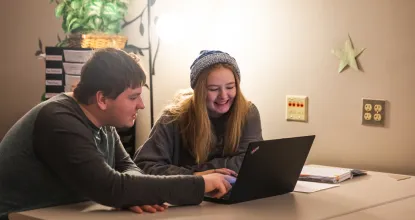Plagiarism is the unacknowledged use of someone else’s words or ideas. In American academic settings, you will need to show you have done your research, but have still written something new and original. You will need to appeal to experts and authorities while improving upon or disagreeing with their work. And you will need to give credit where it’s due while still making your own significant contributions. It’s a fine line to tread sometimes, but you’re always better off erring on the side of caution. If you’re not positive whether you should cite something or note, cite it! You’re better safe than sorry – a charge of plagiarism can have severe consequences. To see what those consequences could entail, please consult the NMU Student Handbook (sections 1.2.3 and 2.3.1 Academic Dishonesty; you can skip to this by hitting CTRL + F or Command + F on your keyboard and typing the section number and name into the search bar that will appear).
Actions that could be interpreted as plagiarism
- Buying, stealing, or borrowing a paper
- Hiring someone to write your paper
- Reusing your own old work (unless given permission by your professor)
- Using a source too closely when paraphrasing
- Building on someone’s ideas without citation
- Copying directly from another source without citation (on purpose or by accident)
Keep in mind that your professors are intelligent people. It’s just as easy for them to find the original source of a paper copied from the Internet or any other source as it is for you to find it to copy from.
When to cite
- When you are using or referring to somebody else’s words or ideas from a magazine, book, newspaper, song, TV program, movie, web site, computer program, letter, advertisement, or any other medium
- When you use information gained through interviewing another person
- When you copy the exact words or a unique phrase from somewhere
- When you reprint any diagrams, illustrations, charts, and pictures
- When you use ideas that others have given you in conversations or over e-mail
- When you are referencing your own old work
Avoiding plagiarism
- When researching or interviewing, mark everything in your notes that was someone else’s words with quote marks and indicate any ideas not directly quoted that were taken from your source. Marking your notes with Q for quotes, S for source, and ME for your own ideas and insights may help.
- Take notes as you work rather than copying and pasting from sources.
- Save all your research materials, notes, and drafts of your papers in case a question arises about a specific source.
- Record all your documentation information immediately. Remember that there are few things more frustrating than having to track down a source weeks after you first accessed it. Keep a running bibliography as you write and cite each source as you use it. That will make you less likely to forget to cite information or to make an error in your citation material.
- Proofread your paper with your notes or copies of your sources nearby; make sure anything taken from a source is acknowledged.
- Rewrite key ideas using different words and sentence structure than were used in the original. When paraphrasing, write your sentence without referring to the original source so that you have to rely on your own words, rather than the author’s.
- Begin paraphrases with statements like “According to…”.
- Put any unique words or phrases within a paraphrase into quotation marks. For example: According to John Smith, Harvard philosophy professor, “savage inequalities” exist in our education system.
- Always indicate where your information came from and what your source’s credentials are. In addition to helping you avoid plagiarism, this will establish the reliability of your information.
- Remember that having a bibliography alone is not good enough. You must include in-text citations within your work, even when you are paraphrasing. in text citations allow your readers to tell the difference between your thoughts and thoughts of other people. These citations also help people track down information from your projects that they find particularly interesting!
View our presentation on plagiarism (pptx)
